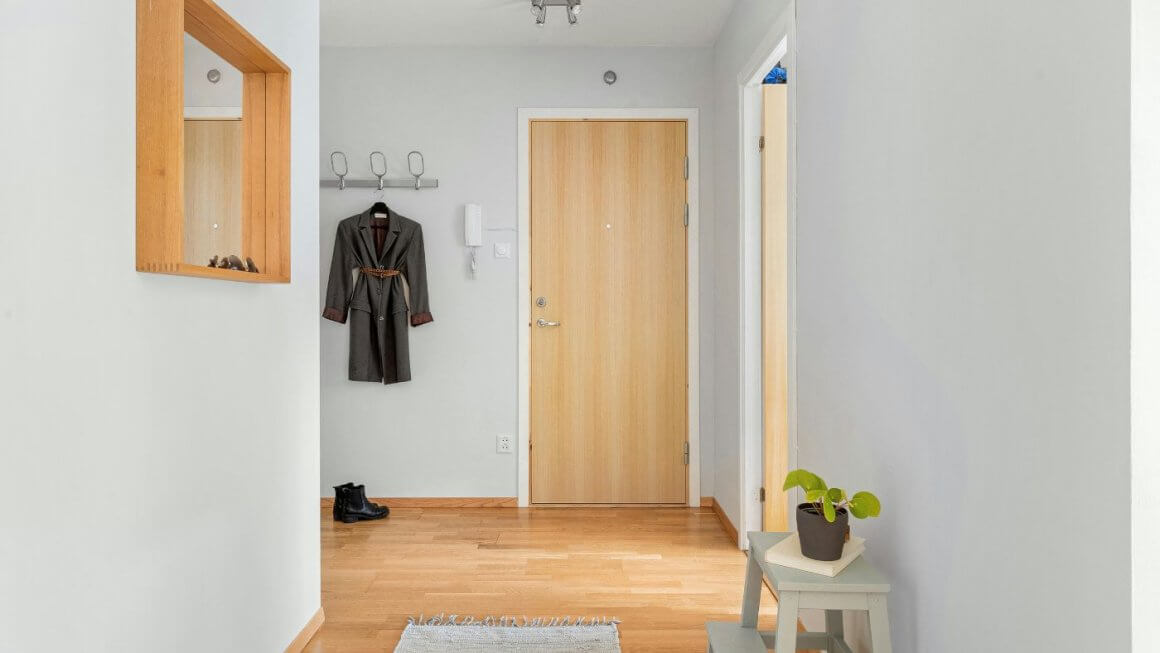Installing Your Letterbox
Letterboxes are something that we barely give a second thought about and definitely something that we all take for granted. However, having a letterbox in your door means that there are no early morning trips to the mailbox on those freezing winter mornings when all you really want to do is try and wake yourself up with a hot drink, not the icy chill that laces the air. Our mail is conveniently delivered right to our homes. And for those houses that have neither, think about the poor postman’s back when he has to bend down to slide your mail under the door!
Even though letterboxes are the norm in the U.K., as opposed to the mailboxes which are favoured by our American friends across the pond, many doors do not come with them pre-installed. And although installing a letterbox into a door may seem like a daunting task (granted, it’s not the easiest of jobs), with a little preparation, patience and know-how, you’ll be “doing-it-yourself” in no time. The outcome will be a functional DIY creation that you can proudly announce is the result of your own hard work and dedication.
Tools needed
- A letterbox. Most of the time these come in kits which include a draught excluder and the fixings.
- Tape measure
- Pencil
- Power drill and drill bit
- Jigsaw blade
- Safety glasses
- Medium-coarse sandpaper
- Electric sander
- Spirit level
- Ruler
Time required
There is no definite amount of time that it will take you to fit your letterbox. It all depends on your experience in DIY and with the required tools. Typically it should take anywhere from 30 minutes for a more experienced DIYer, to a couple of hours for the less experienced. In all cases, it is important to take your time because rushing could result in a hole too big for the letterbox or the wood splintering and splitting and, therefore, a door which is no longer any good!
Increase your home’s kerb appeal with beautiful solid wood external doors. Front & back doors in a range of styles and finishes. 10 year guarantee – buy online now!
Step by step instructions
Firstly, the good news is that the whole installation of the letterbox is done whilst the door is in position on the door frame so there is no need to remove it. You may want to place dust sheets in the work area but it is not an absolute requirement as the dust and debris from the door will be minimal.
You should choose a letterbox that compliments the door so think about the material that the door is made from, i.e. wood or PVC, the style of the door handle and other attributes of the door, such as numbers or glass panels. Try to find a letterbox that is part of a kit containing the draught excluder and nuts and bolts, most come like this anyway.
- First of all you must decide exactly where to place the letterbox. If you have a plain, solid door, you can more or less place it wherever you want, within reason. If your door is panelled you are basically limited to placing it on the centre cross section, between the panels.
- Once you have decided the height that you would like the letterbox to be, you must measure the door so as to make sure the letterbox is centred correctly. From the outside place a mark in pencil, at the height you have chosen, roughly in the centre. Measure the width of the door and place a mark at the centre point at the height you have decided on.
- Draw a straight line using a ruler through the centre point. Make this as level as possible by using a spirit level.
- Next, take the letterbox and measure its width, marking its centre point with a pencil. Line up the top edge of your letterbox with the line you have drawn on the door and align the two centre points on the door and letterbox as well. Draw around the letterbox.
- You are not going to cut out this whole rectangle. Instead you are going to measure the opening on the inside of the letterbox, the smaller rectangle in which the mail comes through. Make a note of these measurements and transfer them to your door. Mark the hole a couple of millimetres larger than the actual measurements of the opening. You can continue to use a spirit level to ensure accuracy throughout.
- When you have the measurements transferred to the door, draw out the rectangle. The next step is to take your drill and use a drill bit that will create a hole large enough for the jigsaw to pass through. A 16 millimetre drill bit should be sufficient. Wearing safety goggles, carefully drill four holes in each corner of the inner rectangle. In order to stop the wood from splintering or splitting, you should stop drilling once the drill bit starts to surface on the other side. Then, drill from the other side to complete the hole.
- Next, use the jigsaw the cut out the rectangle. Cut just inside the lines and take your time. Do not rush or push the jigsaw too hard.
- With some medium-coarse sandpaper, sand the edges of the opening. If you want you can use an electric sander.
- Using the letterbox, mark out where you will need to drill for the bolts and screws. Drill the holes using the same technique as before. The instructions that come along with the letterbox should have some indication as to what size drill bit you should use. If your letterbox requires you to drill for lugholes, remember not to go all the way through. You should only go as deep as the lugholes are or slightly deeper.
- Affix the letterbox using all of the lugholes, nuts, bolts and screws that came with it. Make sure that they are sufficiently tightened and then attach your draft excluder.
Where To Install The Letterbox
As mentioned above, the position of the letterbox may be limited by the design of the door. If it is not, you might be wondering exactly where to put it. There are a few different schools of thought based on different considerations.
Ease of use: if you want to make the postman’s job effortless, the best place to install the letterbox is around the middle of the door. If it’s installed too low and requires bending down it can be uncomfortable to use.
Security: it’s also important to think about any security issues. Consider the build up of post if you were to go on holiday, will it be visible? If so you should consider where the letterbox could be located to ensure this is not the case. Secondly, it should be placed far enough away from the handle and locking mechanism to make sure it’s not possible to use the letterbox as a means to break into your property.
Thermal Efficiency: consider the effect of the letterbox installation on your home. Will it cause a draft? If this is likely to be a big problem you could choose an exterior letter box instead of fitting one to your door.
How To Fit A Letterbox In A UPVC Door
Unlike wooden doors, UPVC doors will usually come with an aperture ready to fit a letterbox (or letter plate). It’s not advisable to try to cut your own letterbox into a UPVC door. However, you can fit or replace an existing letterbox into a UPVC door. Here’s how:
- Measure the aperture in the door, and compare with internal sizes of your letterbox to get a good fit.
- If you’re replacing a letterbox, measure the postal slot too and compare sizes with your chosen new letterbox.
- Measure the thickness of the door to ensure you choose the right letterbox width.
- Use a Philips screwdriver to remove your existing letterbox if it is in place.
- Position the letterbox with the larger plate on the inside of the door.
- Line up the screws, and screw into place.
Conclusion
Although this is not an overly complicated project, it requires accuracy and skill with the tools that need to be used. Never force anything or you run the risk of damaging the wood. And of course, safety first, always wear goggles to protect your eyes from any flying bits of wood. Take your time and in the end (to the delight of your postman) you’ll have a fully functional letterbox. Why not go ahead and test it out, you know you want to!
Related articles









